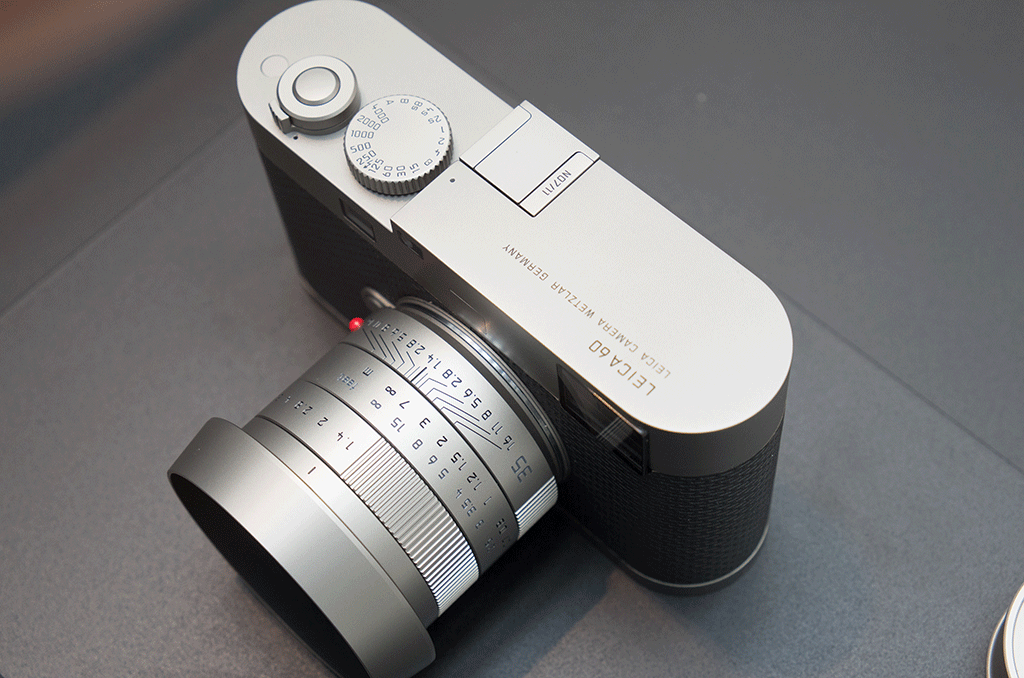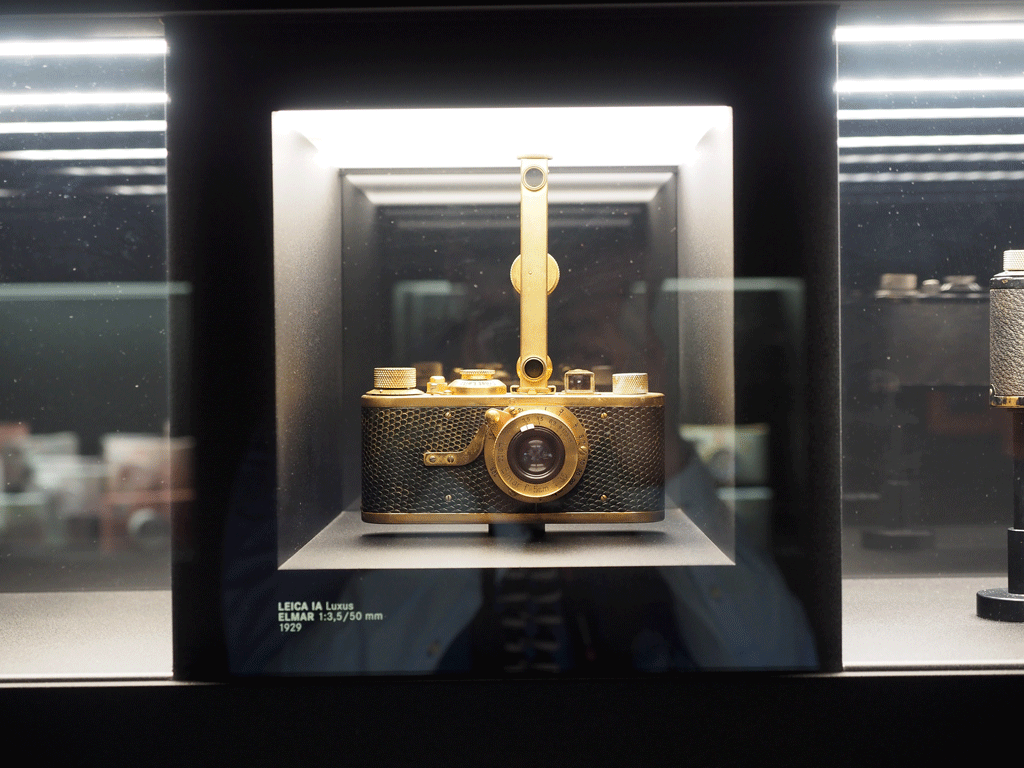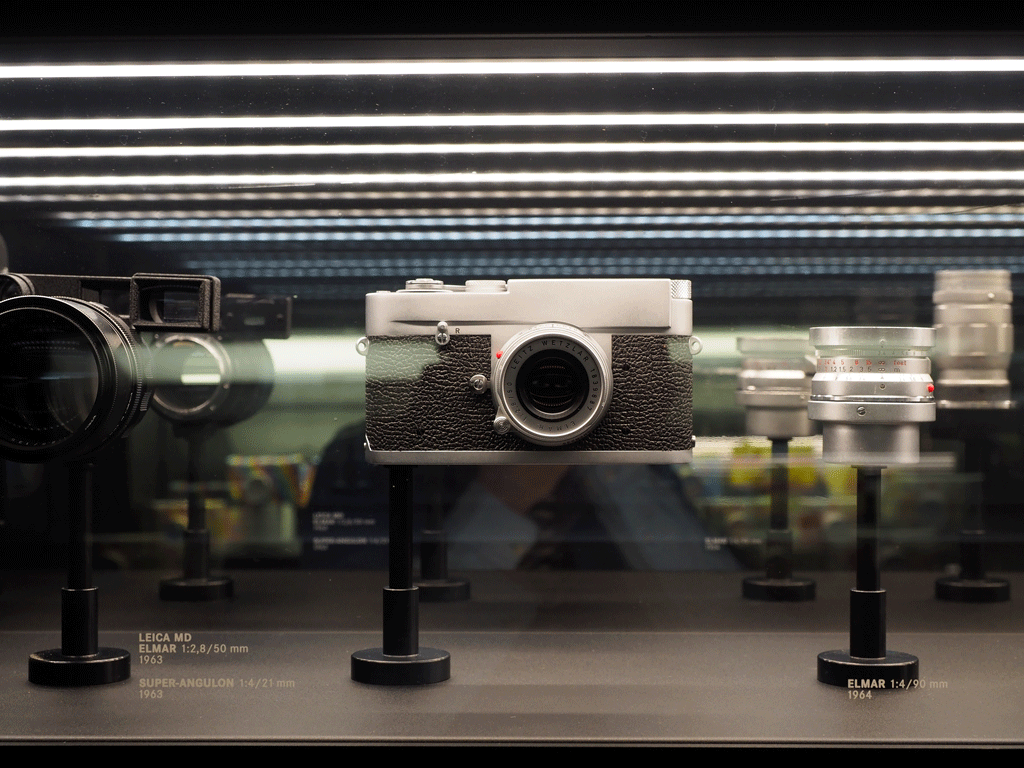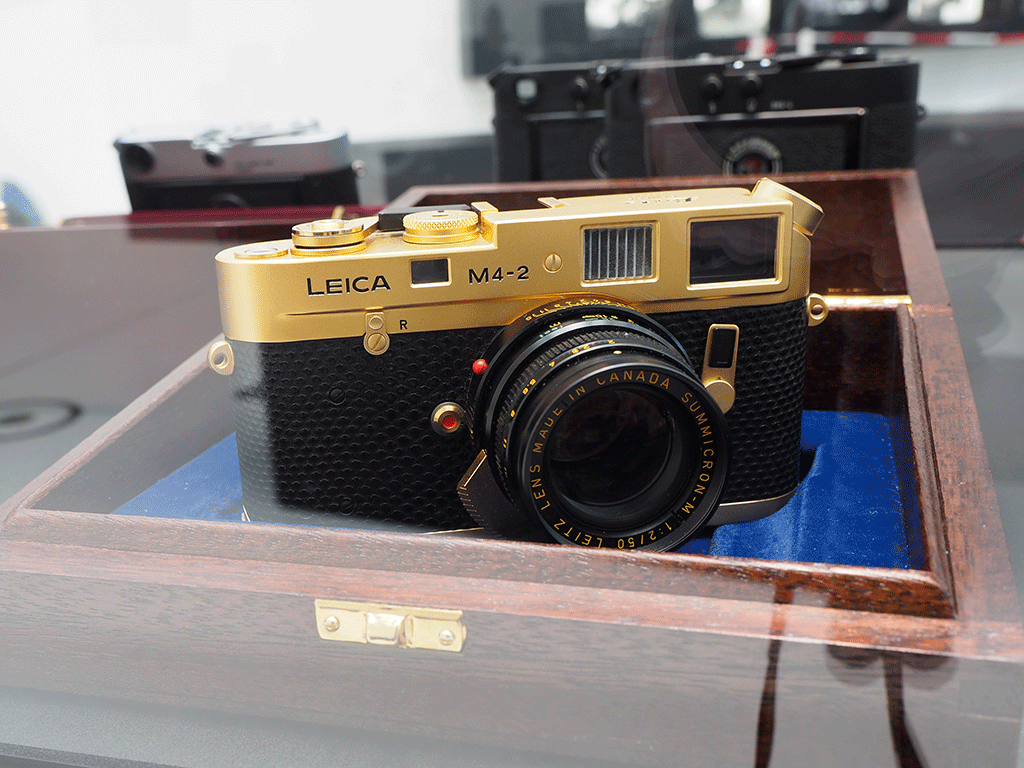As I said in part 1 of our Leitz-Park tour, the Leica Museum in Wetzlar, Germany is a shrine to all things Leica. It contains a number of treasures that are not only rare and beautiful but significant to the history of photography.
The Leica KE-7A is basically an M4 but made for the military. They’re matte black and come with an Elcan 50mm F2.0, which was made with only 4 elements to be as compact as possible for military photographers.
In the 250 FF, Leica made a film rangefinder that could take drums with 10 meters of film which allowed for 250 shots without changing your roll. This 250, model FF is based off the Leica III. Previous models of the 250 were called the ‘Reporter’ so this was probably intended so journalists don’t miss important moments while changing their film.
One of the newer cameras on display was the recent Lenny Kravitz ‘Correspondent’ M-P and lenses with matching patina. The worn brass looks even better in person than in the product photos.

This is a Leica M Edition ‘LEICA 60’, released in 2014 on the 60th anniversary of the Leica rangefinder system. In 1954, the world was introduced to the M3, which was the first M-series camera with the characteristics we recognizes today as quintessentially Leica.
The Edition 60 is as minimalist as they come, reduced to the bare essentials. The top of the camera has only a dial for the shutter speed, the shutter release and a on/off button. ISO controls are all you’ll find on the back. It’s a truly gorgeous and timeless design.
One of the rarer specimens in the Leica museum is this IA Luxus. Gold-plated and covered in lizard skin, only 95 of them were made so it’s no surprise that in 2012, one of these fetched $1.35m at auction.
You might have noticed something missing on this Leica: the viewfinder. I know what you’re thinking: Leica has finally taken their sense of function and minimalism too far but really the MD was intended for scientific photography use and meant to be mounted to microscopes. Leica also makes microscopes, remember?
The M4-2 Oskar Barnack Special Edition was made in 1979 to celebrate the father of 35mm photography’s 100th birthday. Made in Canada, there were 1000 units of these 24k gold-plated M4-2s.
Barnack is considered the father of 35mm photography because of this, the Ur-Leica. It was a collaboration between Barnack (who designed the body) and Max Berek (who developed the 50mm F3.5 lens). Before this camera, photography meant you had to haul an enormous box on a tripod but the birth of 35mm allowed photography to evolve beyond standard static poses .
This one is only a replica of the famous prototype. It’s unknown how many of these priceless artifacts still exist. It’s believed that one or two of them are locked away in Leica’s vaults.
Leitz-Park is a must-visit for photographers not only because you get to see some unique pieces of photographic history but it’s inspiring to see the images that legendary artists and journalists made with them. It will be interesting to see which modern cameras and lenses we have now will be considered important enough to preserve for future generations.









